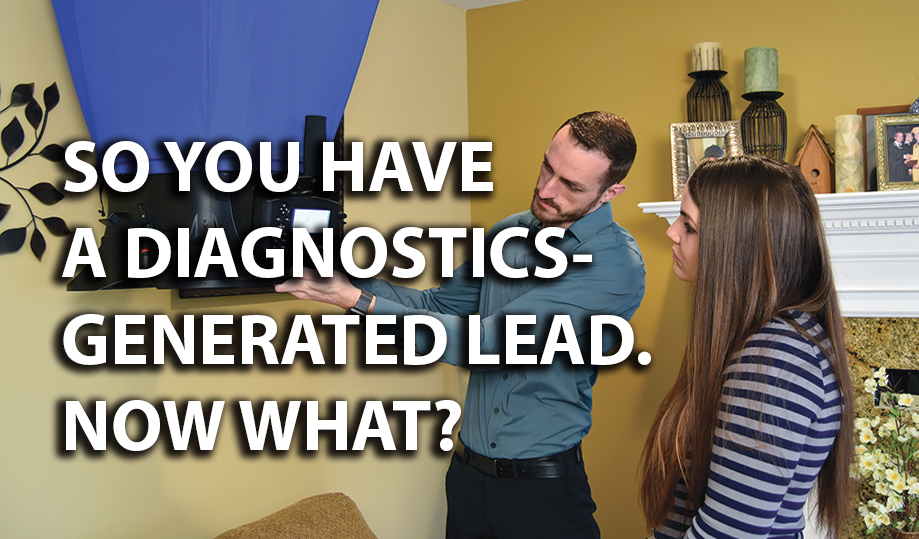First Sales Contact
Whether your first sales contact is on the phone, in an email, or at the front door, having test results and an initial diagnosis in hand, you’re uniquely qualified to change the normal sales conversation.
Understand that the Learn-Omercial is already underway, and the diagnosis becomes the foundation upon which you rely throughout your visit. At this point, the spirit of your visit is to help customers understand their system defects and discover the solutions.
Don’t worry about selling until your customer completely understands what you offer and what they will get from it. This approach mirrors the elevated sales position of a service tech. Be like the technician whose initial greeting is “Hi, I’m here to help.”
At the Kitchen Table

Remember, the Learn-Omercial is rolling out. Keep your conversation focused on diagnostics, and don’t fall back into old comfortable habits.
A typical industry sales call begins with a monologue about the virtues of your company and the superiority of the manufacturer you represent. Blah, blah, blah.
With the diagnostics approach, speak only briefly about the values of your company and your relationship with your manufacturer. Let your primary message be conveyed by what YOU do with and for your customer.
People care about the value they receive for their money and that they are making a smart purchase. They show interest in diagnostics when they agree to your visit, so talk about the issues the diagnostics revealed. Learn more detail here: ncilink.com/Translate.
Now it’s time for a discussion leading to the next level. If the diagnosis is high static pressure, teach the customer about it and ask questions to engage them in the discussion. They want to understand this pressure thing and how it affects them. This is the diagnostics sales lead.
Some good questions to ask include, “Have you replaced your filter with a high-efficiency one recently?” “Did you notice any room airflows seem lower lately?” “Have you had anyone crawl through your attic in the last couple of months?”
Each of these questions can lead to discussions that engage customers deeper into the diagnostics and the solution. Take time to explain and discover with them. Can you see what’s happening?
Simple Deeper Diagnostics
Each diagnostic test has a cousin test that reveals a little more of the picture. If your Learn-Omercial is working, customers will eagerly engage in some very simple diagnostics with you. Invite them to join in the discovery process and get them up and moving with you.
The diagnostics sales lead comes from a discovery process which may be a simple inspection of a suspected problem you identified together. Maybe the two of you check whether that new filter is restrictive. Or maybe you both take a static pressure profile at the equipment if it is accessible or finding closed dampers.
My favorite approach is taking the customer into the most uncomfortable room, then helping them estimate airflow.
For example, say you help them calculate 125 beach balls of air per minute (read ncilink.com/beachballs for a full explanation). Then invite them to measure the register airflow with a balancing hood.
Be still. Say nothing when the hood measures just 38 and watch the Learn-Omercial work its magic.
Measure supply and return duct static pressures and compare your results to 20% of rated static pressure. Be sure you teach them what the maximum pressure should be before measuring it. When it’s high, ask them what might cause the high pressure. Be patient and give hints to help them find solutions when appropriate.
If duct temperature loss is the initial diagnosis, one quick and effective diagnostic you can do together is to place a temperature probe in a return grille and supply register farthest from the equipment.
Click Below for the Next Page:













Recent Comments